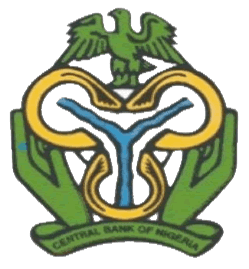Foreign Exchange Market in Nigeria
FX Structure | FX Mgt Before Now. | FX Mkt | Debt Conversion | Exchange Rate Policy | Movement in Reserves | International Payments | Reserve Management
Over time, the Central Bank of Nigeria (CBN) has adopted different exchange rate systems, such as controlled, floating, and managed float, alongside intermittent interventions, all aimed at achieving extended market stability. In a controlled exchange rate system, the central bank determines a fixed exchange rate, while in a float exchange rate system, market forces determine the rate. Meanwhile, the managed float exchange rate system allows the influence of demand and supply to determine the exchange rate but also permits occasional intervention by the central bank to manage persistent fluctuations.
The evolution of the foreign exchange market in Nigeria up to its present state was influenced by a number of developments in areas of international trade, domestic institutional arrangement and structural shifts in production. Before the establishment of the Central Bank of Nigeria (CBN) in 1958 and the enactment of the Exchange Control Act of 1962, foreign exchange was earned by the private sector and held in balances abroad by commercial banks that acted as agents for local exporters. During this period, agricultural exports contributed the bulk of foreign exchange receipts. The fact that the Nigerian pound was tied to the British pound sterling at par, with easy convertibility, delayed the development of an active foreign exchange market in Nigeria. However, with the establishment of the CBN and the subsequent centralisation of foreign exchange authority in the Bank, the need to develop a local foreign exchange market became paramount.
The increased export of crude oil in the early 1970s, following the sharp rise in its prices, enhanced official foreign exchange receipts. The foreign exchange market experienced a boom during this period and the management of foreign exchange resources became necessary to ensure that shortages did not arise. However, it was not until 1982 that comprehensive exchange controls were applied as a result of the foreign exchange crisis that set in that year. The increasing demand for foreign exchange at a time when the supply was shrinking encouraged the development of a flourishing parallel market for foreign exchange.
The exchange control system was unable to evolve an appropriate mechanism for foreign exchange allocation in consonance with the goal of internal balance. This led to the introduction of the Second-tier Foreign Exchange Market (SFEM) in September 1986. Under SFEM, the determination of the Naira exchange rate and allocation of foreign exchange were based on market forces. To enlarge the scope of the Foreign Exchange Market Bureaux de Change was introduced in 1989 for dealing in privately sourced foreign exchange.
As a result of volatility in rates, further reforms were introduced in the Foreign Exchange Market in 1994. These included the formal pegging of the naira exchange rate, the centralisation of foreign exchange in the CBN, the restriction of Bureaux de Change to buy foreign exchange as agents of the CBN, the reaffirmation of the illegality of the parallel market and the discontinuation of open accounts and bills for collection as means of payments sectors.
The Foreign Exchange Market was liberalised in 1995 with the introduction of an Autonomous Foreign Exchange Market (AFEM) for the sale of foreign exchange to end-users by the CBN through selected authorised dealers at market-determined exchange rates. In addition, Bureaux de Change was once more accorded the status of authorized buyers and sellers of foreign exchange. The Foreign Exchange Market was further liberalized in October 1999 with the introduction of an Interbank Foreign Exchange Market (IFEM).
The Bank adopted the Retail Dutch Auction System (RDAS), Wholesale Dutch Auction System (WDAS), and Interbank Rate System Regime between 2002 and 2015. The RDAS and WDAS entailed auctions twice a week, with the RDAS intervention being directly to the customers while the WDAS was to the banks to be sold to the customers. In 2015, the Interbank Rate System Regime was introduced where the Bank intervened as the need arose. In 2016 the Bank introduced the managed floating system due to increased demand pressure. Under the new regime, the value of the naira in the inter-bank FX market is largely driven by the forces of demand and supply.
The Central Bank of Nigeria (CBN) adopted a ‘willing buyer, willing seller’ model for trade transactions, therefore unifying the foreign exchange market in 2023. The abolishment of FX market segmentation and collapse of the previously existing segments into the Investors’ and Exporters’ (I&E) window, now renamed Nigerian Foreign Exchange Market (NFEM). All eligible transactions such as FX applications for Medical Needs, School Fees, Business Travel Allowance/ Personal Travel Allowance (BTA/PTA), and Small and Medium Enterprises (SMEs) transactions are permissible at the NFEM and processed by the Deposit Money Banks.

 Flickr
Flickr Instagram
Instagram LinkedIn
LinkedIn